A Wisconsin Tribute to Negro Leagues Baseball
By Murv Seymour | Here & Now
August 6, 2021 • South Central Region
Special projects reporter Murv Seymour goes to the ballpark to explore a tribute to the Negro Leagues and their deep ties to Wisconsin as the Madison Mallards collegiate team took the field in unique uniforms evoking a special era of baseball.
“Baseball — it’s the American pastime,” exclaimed baseball historian Ken Bartelt.
It’s almost game time for the Madison Mallards, a baseball team that fields collegiate-level players at a crowded ballpark on the north side of Wisconsin’s capital city.
“It’s our 21st season here in Madison,” said Vern Stenman, president of Big Top Sports and Entertainment. “It’s all about fun at a game, you know, from bobbleheads to fireworks, to beers and hot dogs.”
Mallards catcher Drake Baldwin praises the game: “It’s a good environment coming here every day.”
For outfielder Cam Cratic, Baldwin and the rest of this team, the game of baseball is something special.
“I’ve been playing it since I was three years old,” said Baldwin. “I wouldn’t do it if I didn’t love it.”
The game on the diamond at the “Duck Pond” on July 22, 2021 was a first.
“You can trace a lot of big moments in American history through baseball,” said Bartelt.
It’s a gem of a learning lesson where history is brought to life on the field.
“Tonight is our first-ever Negro League tribute,” Stenman said.
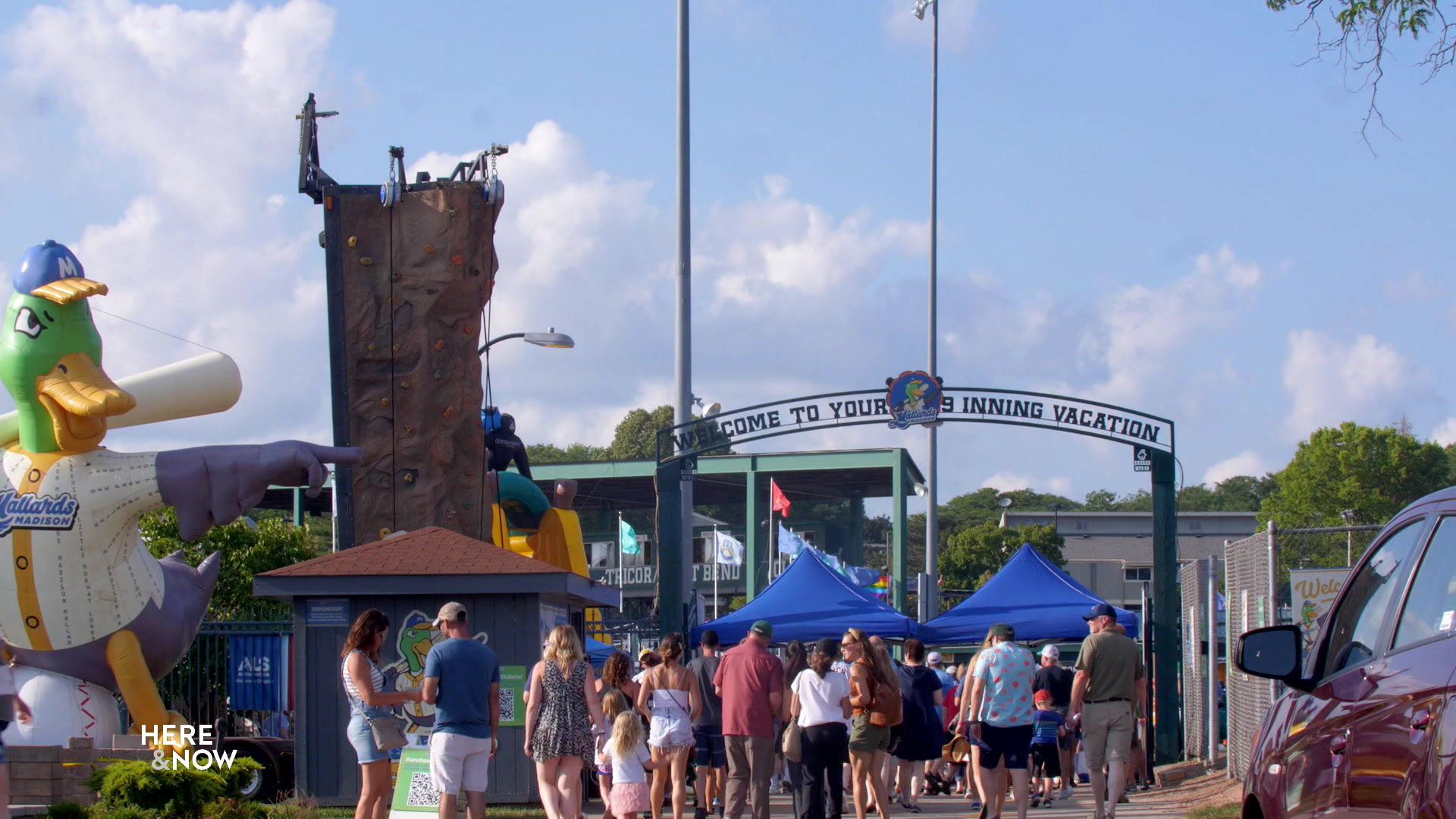
Madison Mallards fans line up at the gates to the Duck Pond for a game on July 22, 2021 when the team paid tribute to the history of Negro Leagues baseball. (Credit: PBS Wisconsin)
In the stands, fans wore jerseys, hats and shirts in tribute of the 3,400 or so ballers that played in the Negro Leagues from 1920 to 1960.
“I got my Satchel Paige jersey tonight, who I consider one of the best pitchers all-time in baseball,” said fan Tim Bautch. “So, I think really the idea of understanding that there are some great players, you know, that weren’t able to be in the Major Leagues because of the color of their skin. And I’m glad that finally baseball is seeing the importance of the players from the Negro Leagues and how they were just as important.”
A tribute to baseball greats
Mallards players wear entire uniforms just like the ones worn by the Milwaukee Bears, a Negro Leagues team that played almost a hundred years ago.
“We got the opportunity to use some authentic, well, replica uniforms of the Milwaukee Bears,” said Stenman.
“I’m excited to play in these for sure. It’s definitely going to be a special experience,” said Cratic. “I feel like I’m in the 1940s — like for sure.”
“Yeah, honestly, I mean, seeing Cam and I in these, it almost feels like we’re playing for the Milwaukee Bears,” observes Baldwin.
Stenman points to another part of the celebration: “We’re actually giving out right now trading cards that are officially licensed by the Negro League Baseball Hall of Fame in Kansas City.”
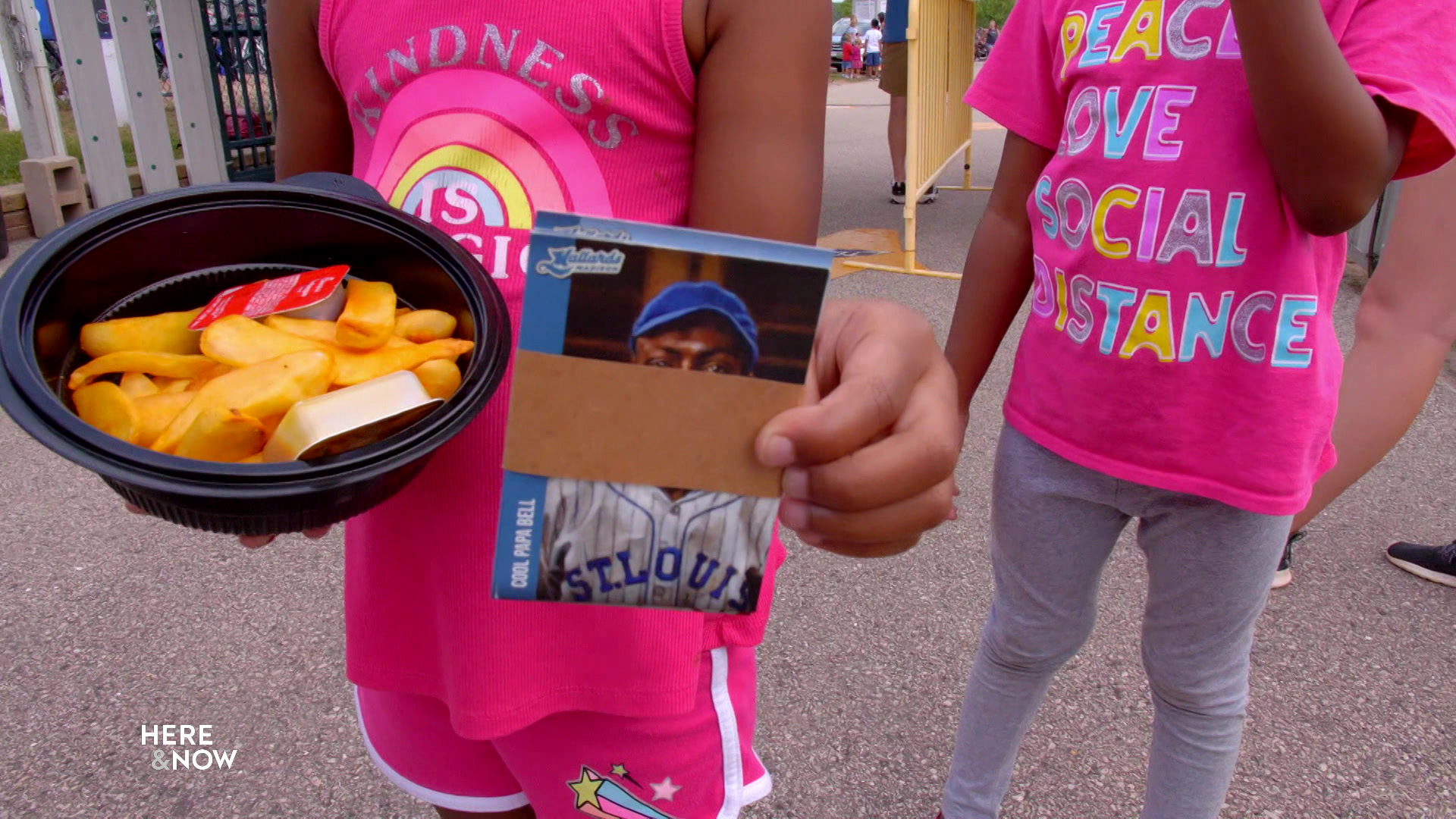
A young fan attending the Madison Mallards tribute to Negro Leagues baseball holds trading cards commemorating some of the greats of the game. (PBS Wisconsin)
“There’s a lot of talented players back then that weren’t given the opportunity to play in the Major League,” notes Cratic.
The trading cards feature the stories and stats of some of greatest players from the Negro Leagues, guys like Willie “Cannonball” Jackman of the 1928 Philadelphia Giants and Grant “Home Run” Johnson, who smashed 60 out of the park while playing on an integrated minor league team in 1894.
And then there was this guy: “Hammering” Hank Aaron who played for the 1952 Indianapolis Clowns for two-hundred bucks a month. Later that year, he signed with the then integrated Major League Milwaukee Braves.
Aaron went on to break Babe Ruth’s home run record.
“I can’t wait to see parents talking to their kids tonight about the team. I hope they’re going out and googling it and learning a little bit more about the Negro Leagues,” said Stenman, who goes on to highlight some local history.
“Satchel Paige played a lot of baseball here in the state of Wisconsin, and that’s something that we need that story to be told,” he explained. “You know, Jesse Owens played baseball. Jesse Owens, the track star, played baseball at Stevens Field here in downtown Madison in the 1930s after his run in the Olympics. And people don’t know all these stories. If we can prompt getting that dialog going a little bit by telling that story here at a baseball game tonight, that’s what that’s all about.”
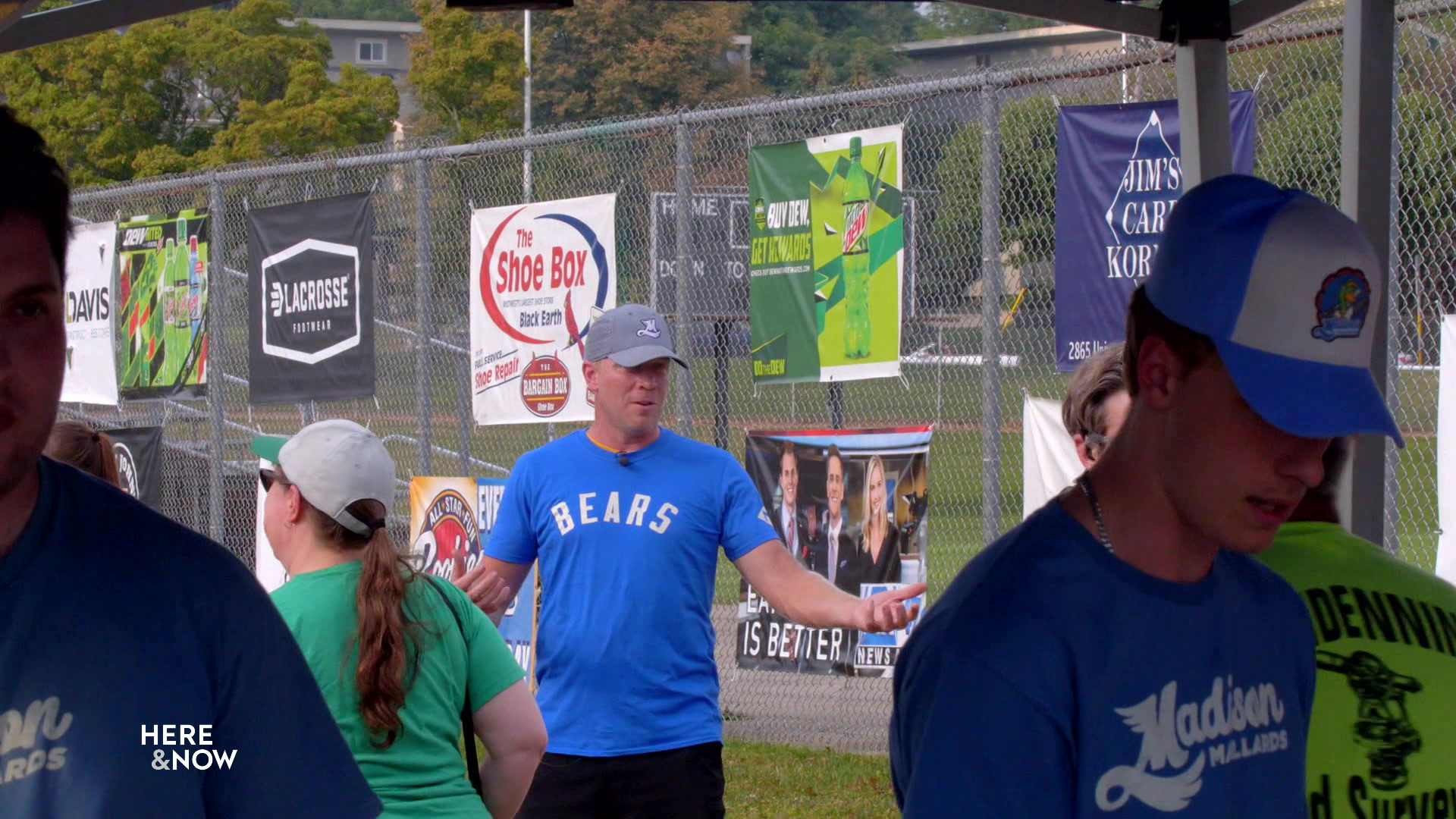
Vern Stenman is president of Big Top Sports and Entertainment, the company that owns the Madison Mallards. “I can’t wait to see parents talking to their kids tonight about the team,” says Stenman about the team’s tribute to the Negro Leagues and Milwaukee Bears. (Credit: PBS Wisconsin)
Cratic shares that hope as well.
“Hopefully some kids go home, and they look up the Negro Leagues, and they look at the Milwaukee Bears, and they look to see what they did,” he said.
“From wearing these uniforms, I’m definitely going to go home and look up some stuff to see how they played and see if I recognize any of the names,” Baldwin added.
Stenman agreed.
“I didn’t really know the whole story of the Milwaukee Bears myself,” he said. “And I’m a baseball fanatic.”
The legacy of the Milwaukee Bears
No one knows a lot about the 1923 Milwaukee Bears.
“The Milwaukee Bears are one of those untold stories,” said baseball historian Ken Bartelt. He noted their manager was Pete Hill, who was inducted into the Baseball Hall of Fame in 2006.
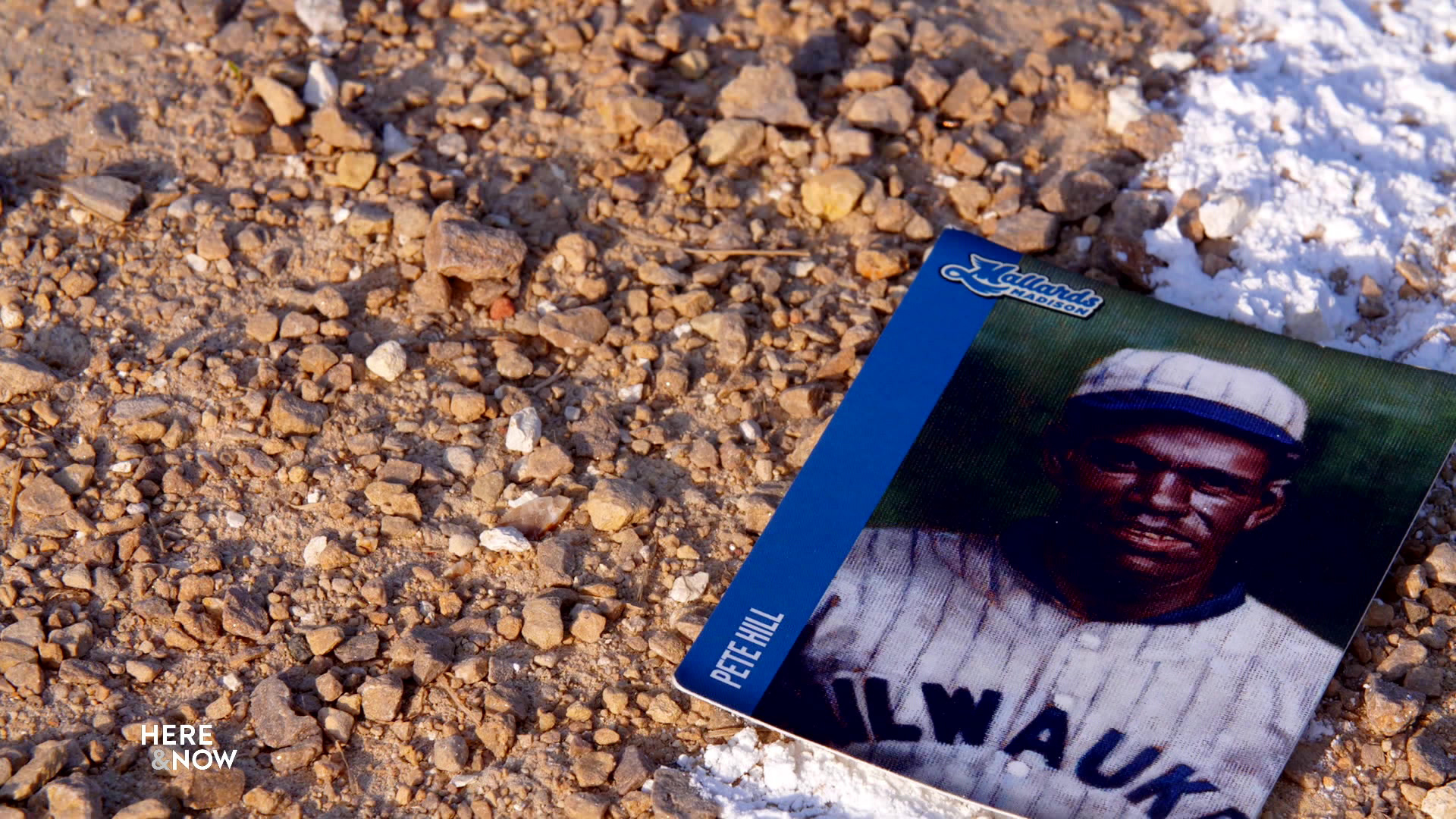
A Madison Mallards promotional baseball card recognizes Pete Hill, who managed the 1923 Milwaukee Bears and was inducted into the Baseball Hall of Fame in 2006. (Credit: PBS Wisconsin)
Historians believe a grainy, faded picture might be one of the only snapshots featuring a few Milwaukee Bears players. Bartelt, a University of Wisconsin-Milwaukee doctoral candidate, loves talking baseball. When it comes to the Bears, he knows more than most, with part of his master’s thesis on the Milwaukee team.
History records that they barely made it through one lone, partial season. But in those four short months, the Bears had an impact on the game.
“The Milwaukee Bears actually have connections to some of the biggest figures and moments in baseball history,” Bartelt said. “The Bears played in one of the first-ever games umpired by Black men and in their home opener at Borchert Field.”
Bartelt recalled the legacy of this baseball field near Rose Park in Milwaukee, which is now an historic landmark forever connected to the Bears, the Brewers, the Braves and a lot of other big events in Wisconsin.
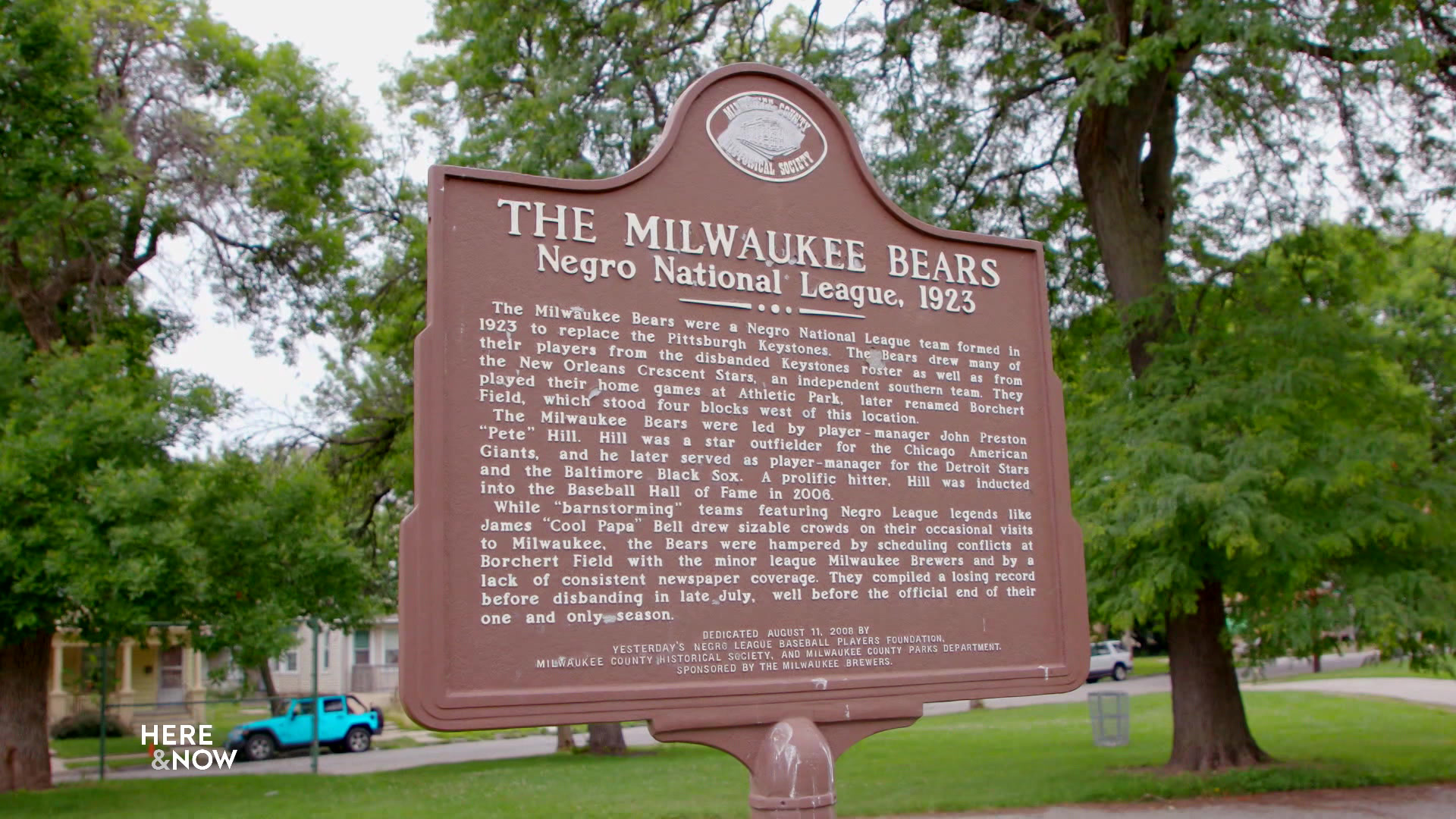
A historical marker at Rose Park in Milwaukee details the history and legacy of the Milwaukee Bears and its 1923 season. (Credit: PBS Wisconsin)
“We’re kind-of on the site of the former Borchert Field,” Bartelt explained. “It was in this general location, and that was Milwaukee’s main sports venue up until 1953 when County Stadium was built. This was a community gathering place. The Milwaukee Brewers minor league team played here. Obviously, the Milwaukee Bears — the Negro League team — played here. There were football games played here.”
“A lot of people have heard about the Kansas City Monarchs, that you’ve heard about Jackie Robinson, maybe the Chicago American Giants — those big teams — but some of the smaller teams that maybe didn’t do as well, like the Milwaukee Bears, they’ve been kind of forgotten to history,” added Bartelt. “By looking at those teams, you’re going to get a more complete picture of what the Negro Leagues were like.”
He explained that it wasn’t easy for the Bears.
“It was challenging to try to set up a business like that in Milwaukee, Wisconsin, in the 1920s,” Bartelt said. “The Black population in Milwaukee wasn’t very big yet, so it was difficult to attract fans, especially in a market where you had a very popular minor league white team, the minor league Milwaukee Brewers.”
Still, this side of the game left a lasting legacy.
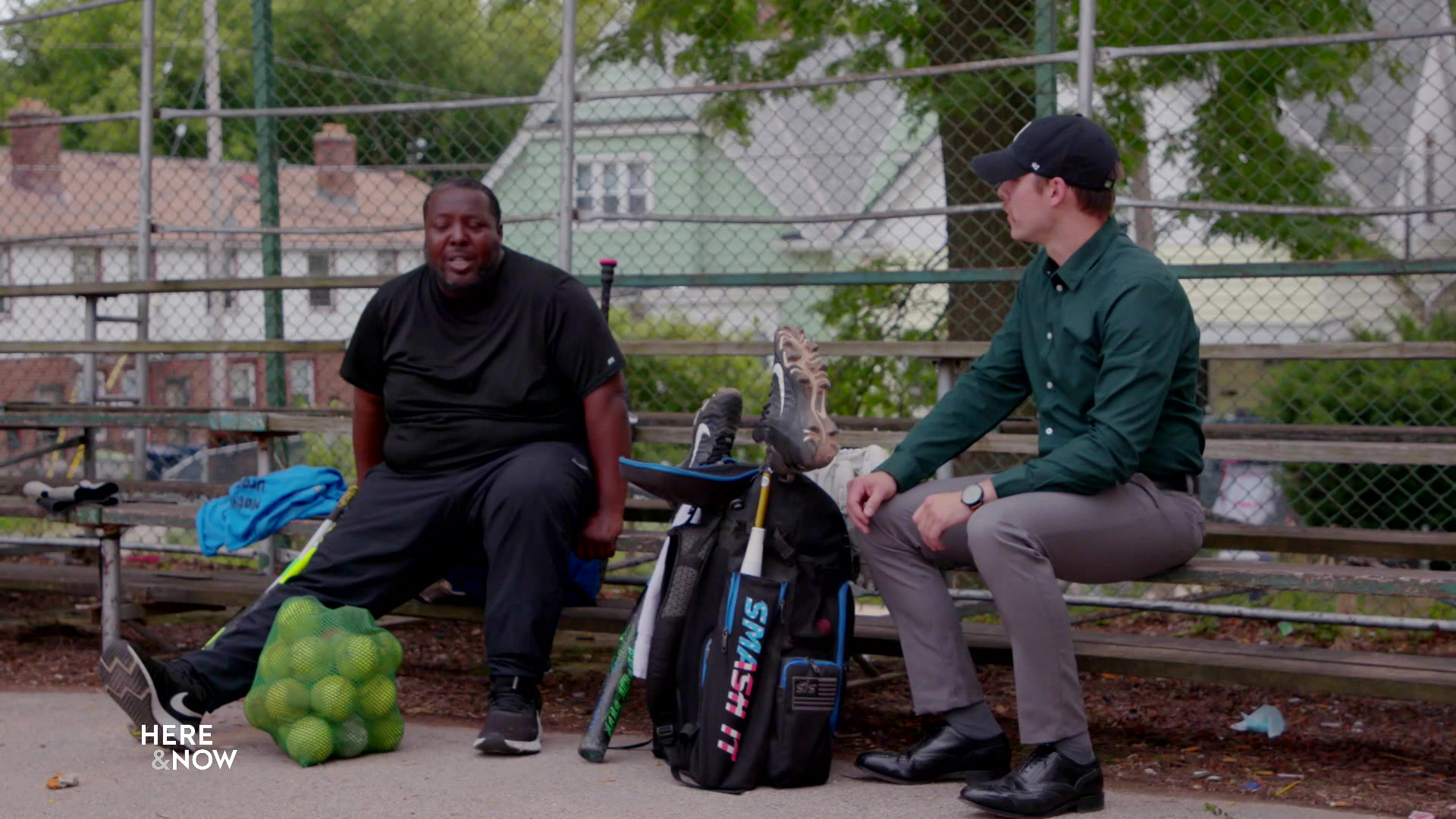
Baseball historian Ken Bartelt (right) talks with a recreational softball player at Rose Park in Milwaukee, which is near the site of Borchert Field, which was home to the city’s baseball teams before County Stadium was built. “You can trace a lot of big moments in American history through baseball,” says Bartelt. (Credit: PBS Wisconsin)
“The Negro Leagues are such a great example of Black entrepreneurs building something in what was something kind of a dual, racist economy in the United States,” said Bartelt
A Black triumph
“The Negro Baseball League is a part of Black history. It produced some of the greatest baseball players that ever played the game,” said Dennis Biddle, an 86-year-old Milwaukee resident who once threw curveballs and sinkers from the mound.
“Homestead Braves, New York Eagles, Chicago American Giants, Baltimore — there was 72 teams that made up the Negro Leagues from 1920 to 1960,” he noted
From the senior citizen community center at Rose Park, Biddle recalled his time pitching for the Chicago American Giants in the 1953 and 1954 Negro Leagues seasons. He had a quilt made at this community center in memory of the players who played in the league. He also lobbied to have a marker placed at Rose Park as a permanent reminder to this community.
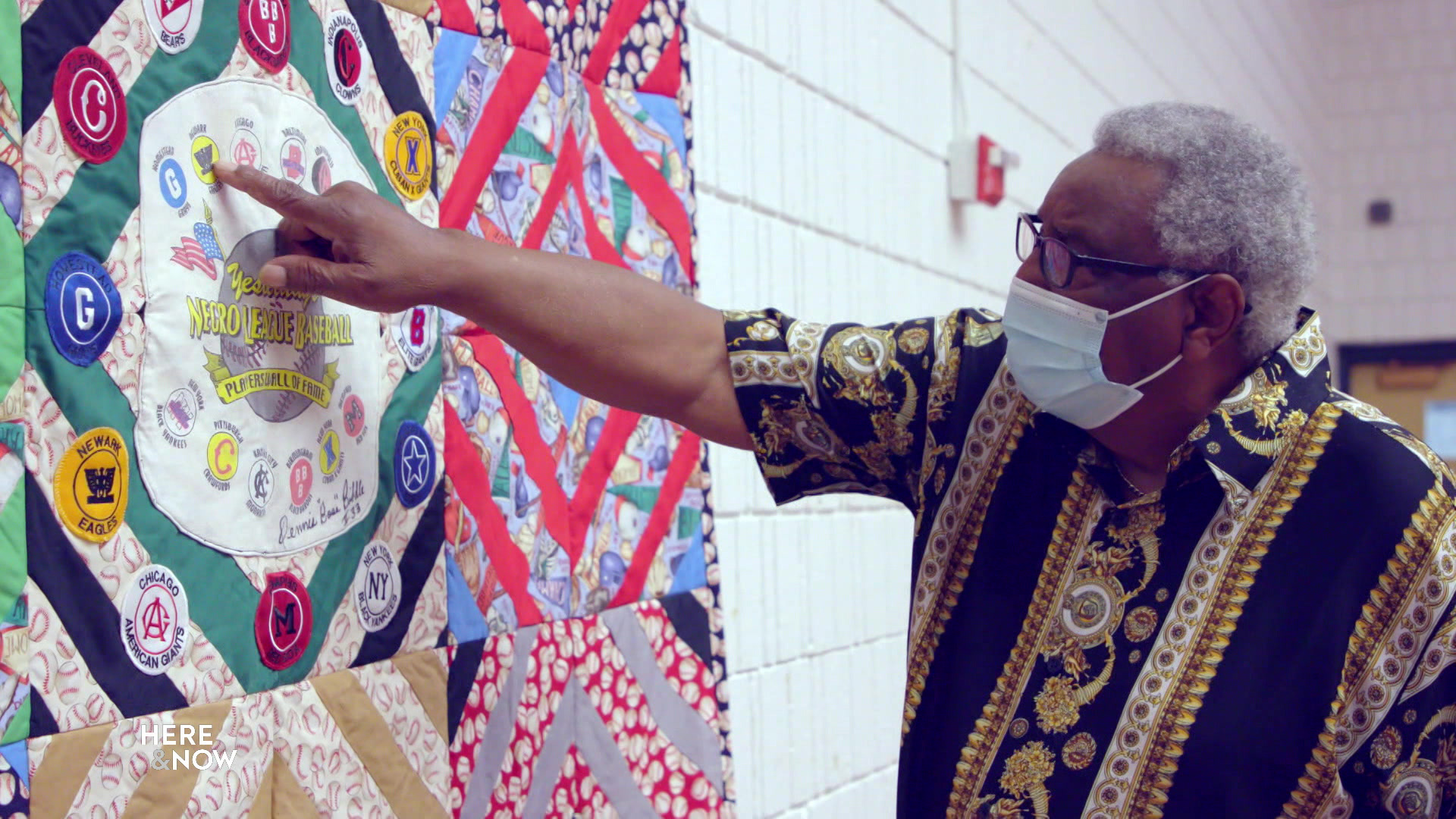
Milwaukee resident Dennis Biddle was a pitcher for the Chicago American Giants in the 1953 and 1954 seasons. He points to a quilt displayed at the Rose Park community center that commemorates Negro Leagues teams.(Credit: PBS Wisconsin)
“A lot of people read it and don’t even know what it’s about, that this area was a part of that great history,” Biddle said.
“Nothing was written down about Hank Aaron coming to a Negro League batting cross-handed,” he shared. “Ernie Banks coming in — he could stand the treatment that we were getting by the fans calling us all kinds of names and stuff. He wanted to go home.”
Biddle said when he sees today’s players in yesterday’s Negro Leagues uniforms, it brings back memories.
“And I can see some of those old men that were making outstanding plays and sometimes brings tears to my eyes — some of them are still living today,” he said. “Less than 40 players are still living that played in the Negro Baseball Leagues.”
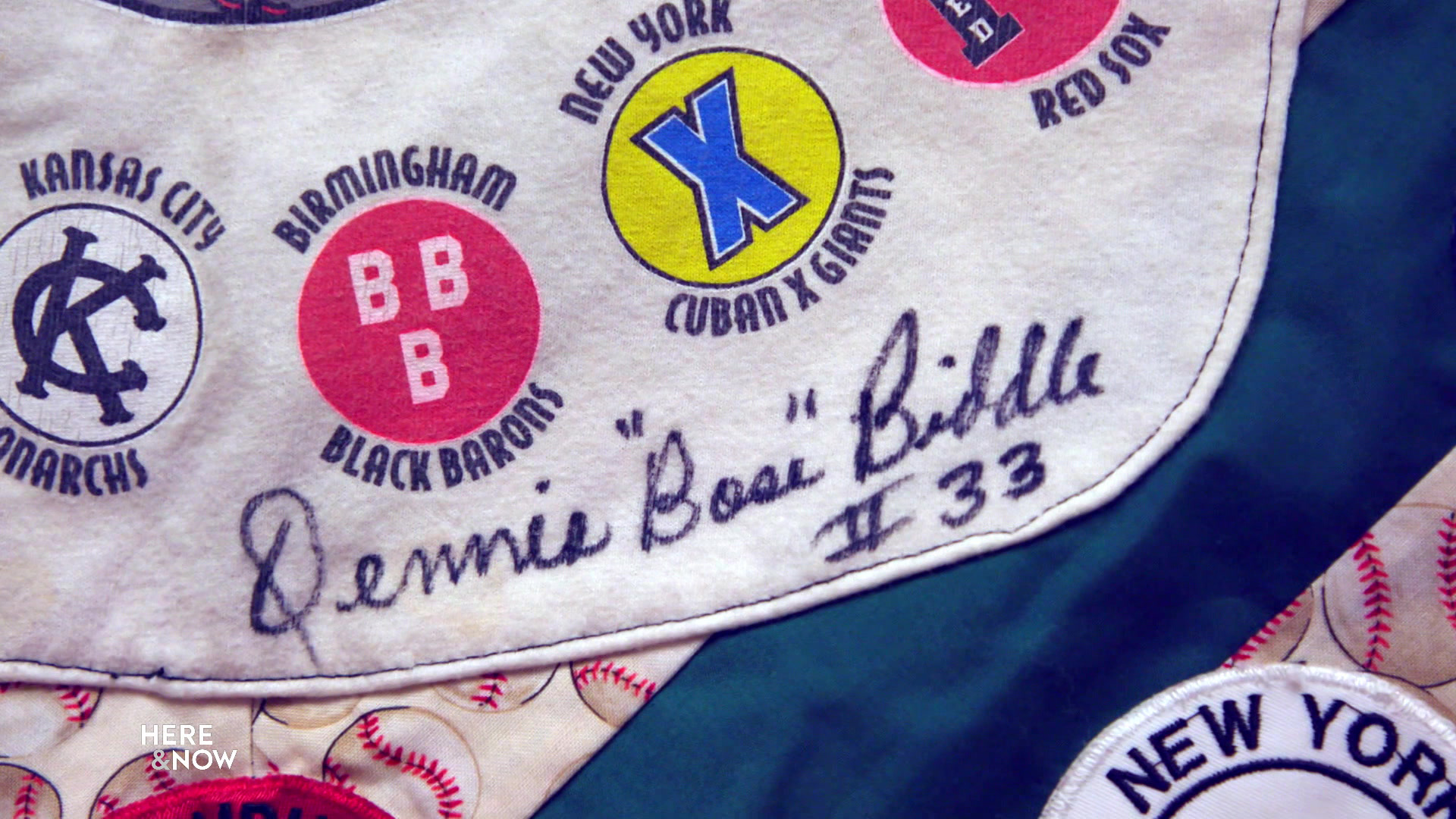
A Negro Leagues baseball memorial quilt displayed at the Rose Park community center in Milwaukee was autographed by Dennis “Boss” Biddle, was a pitcher for a Chicago team in the 1950s. (Credit: PBS Wisconsin)
“It took 10 years before all of the teams had one,” noted Biddle about how long it took for every Major League team to field a Black player. Think of all the great ball players that fell through the cracks that would have been had they had the opportunity.”
“The Boston Braves had a farm team here called the Milwaukee Braves,” Biddle added. “The Bears could only play in the park when they were out of town.”
“This is a Black triumph in the face of the worst racism American had to offer,” noted Bartelt.
“Even our national pastime was segregated,” he added. “You know, Black men could not play on the Major League teams that we love and cheer for today. And that’s a story we cannot forget.”
Baldwin considered his connection to the game.
“I might not be in the situation that I am right now with the Negro Leagues were never here,” he said “So, it’s pretty cool remembering them and kind of thanking them.”
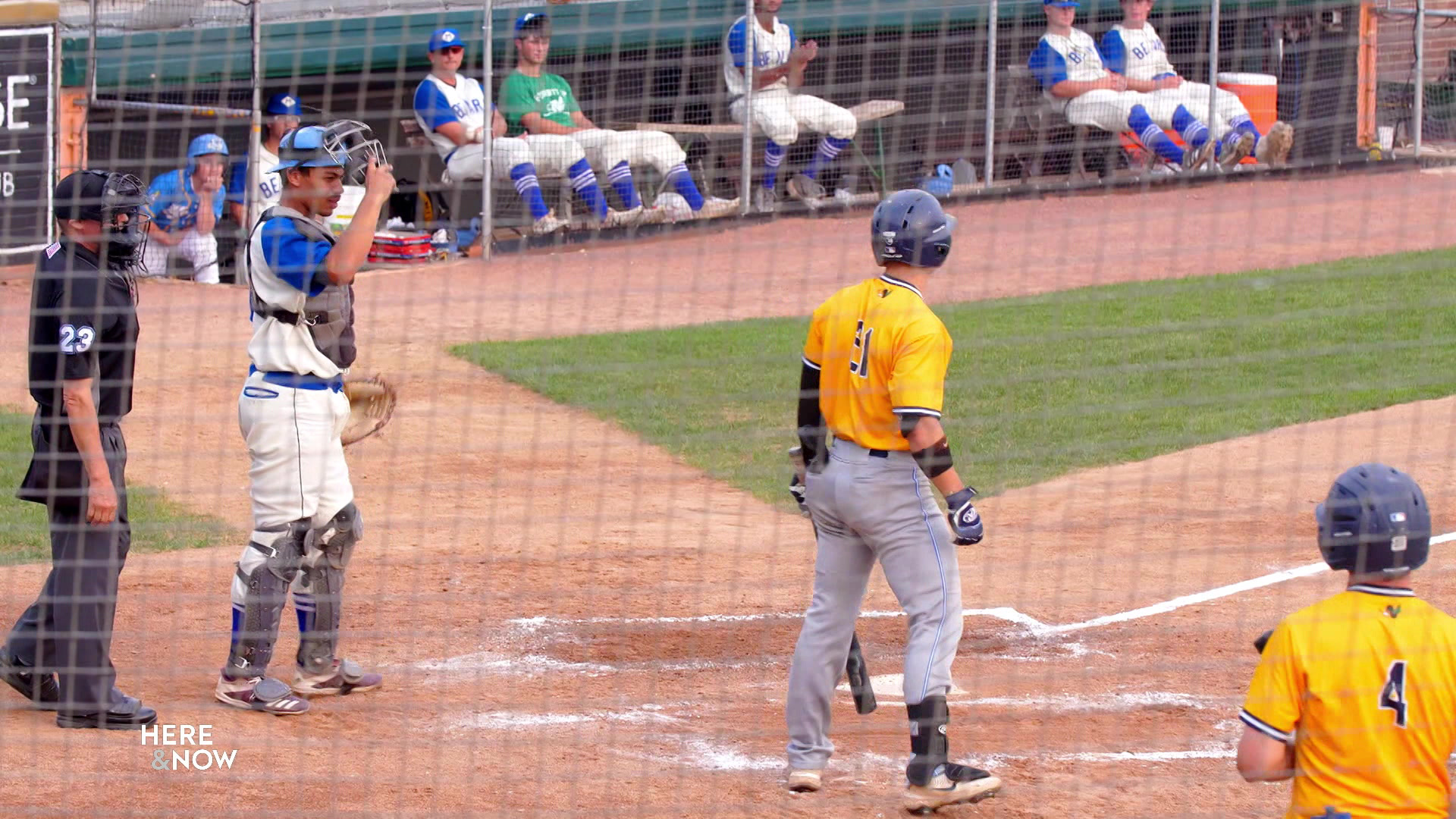
Madison Mallards catcher Drake Baldwin stands up behind home plate between fielding pitches during a game honoring the legacy of Negro Leagues baseball. Mallards players wore the uniforms of the Milwaukee Bears, which played in the 1923 season in the Negro National League. “I’m definitely going to go home and look up some stuff to see how they played,” said Baldwin about this side of the sport’s history. (Credit: PBS Wisconsin)
It’s safe to say this one-game special tribute to history was a big hit with players and fans to a league of pro athletes that haven’t been forgotten.
“I’m glad that people are finally starting to give respect to those players who didn’t get the respect at the time,” said Tim Bautch.
Instead they’re being remembered.
“They wrote about Jackie Robinson — he opened the door, and he did,” said Biddle. “But, he was only one. But, there was many, many more just as good, just as great, and never got the notoriety that they deserved. So my job is to make sure I leave that information for them.”
 Passport
Passport




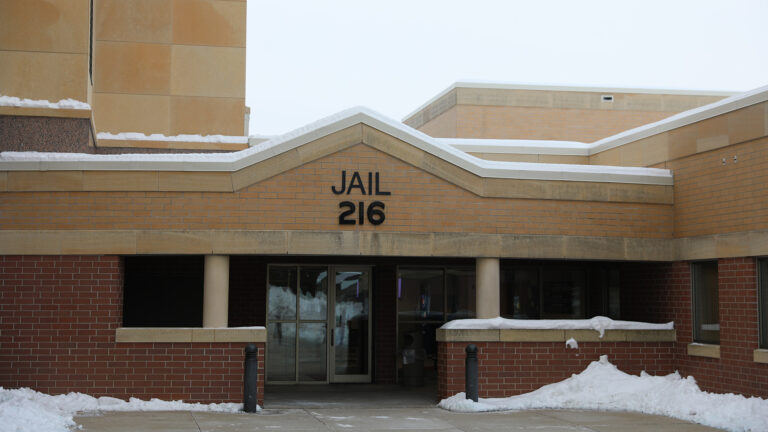
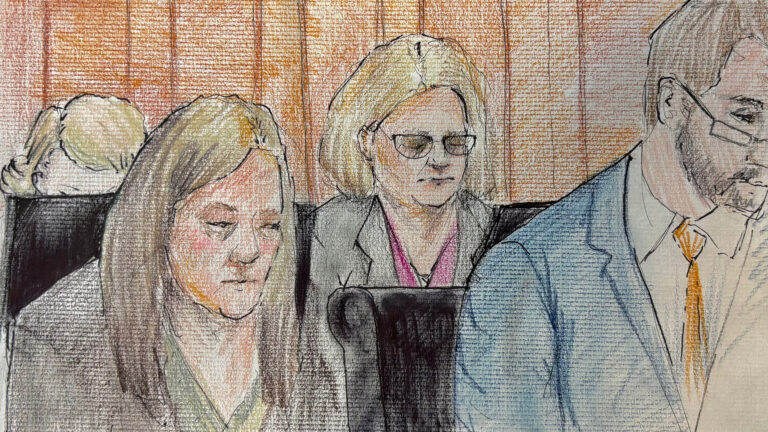





Follow Us